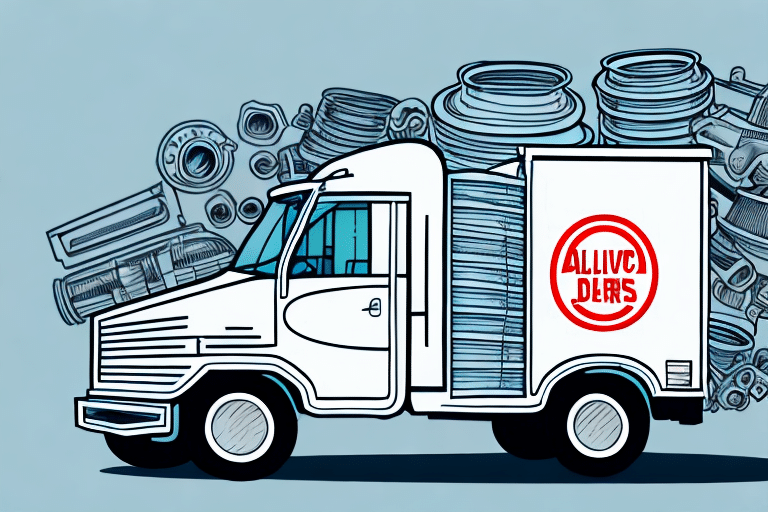Introduction to Automotive Parts Shipping
In today's global marketplace, the efficient transportation of automotive parts is crucial for maintaining uninterrupted supply chains and ensuring timely delivery to customers. The automotive industry relies on the seamless movement of parts to manufacturing plants, enabling continuous production and meeting consumer demands. This article explores the challenges of shipping automotive parts, cost-effective strategies, associated risks, the role of technology, and future trends shaping the industry.
Challenges and Risks in Automotive Parts Shipping
Fluctuating Demand and Supply Chain Complexity
The automotive industry's demand for parts can be highly variable, making it difficult to predict production schedules and plan efficient shipping routes. This unpredictability can lead to overstocking or stockouts, disrupting the supply chain and increasing costs.
Specialized Handling and Packaging Requirements
Automotive parts often vary in size, weight, and fragility, necessitating specialized packaging and handling to prevent damage during transit. This adds complexity and cost to the shipping process, requiring businesses to invest in appropriate materials and training for personnel.
International Shipping and Regulatory Compliance
Shipping automotive parts internationally involves navigating complex customs regulations and documentation requirements. Non-compliance can result in delays, fines, and increased costs. Businesses must ensure proper classification, labeling, and documentation to facilitate smooth cross-border transactions.
Risks of Damage and Theft
Transportation inherently carries risks of physical damage to parts or theft, especially given the high value of many automotive components. Implementing robust security measures and quality control processes is essential to mitigate these risks.
Cost-Effective Strategies and Best Practices
Real-Time Tracking and Route Optimization
Utilizing real-time tracking systems and route optimization software can significantly reduce fuel costs and improve delivery schedules. According to a Supply Chain Dive report, companies that implement these technologies can see up to a 15% reduction in transportation costs.
Shipment Consolidation
Consolidating multiple parts into a single shipment can lower transportation and handling costs. This strategy also reduces the environmental impact by minimizing the number of trips required.
Negotiating with Carriers
Leveraging shipping volume to negotiate better rates with carriers can lead to substantial cost savings. Building strong relationships with logistics partners can also enhance service reliability and flexibility.
Alternative Transportation Modes
Exploring alternative transportation methods such as rail or sea can be more cost-effective for long-distance shipments. For example, rail transport can reduce costs by up to 40% compared to trucking for certain routes, as noted by the U.S. Department of Transportation.
The Role of Technology and Future Trends
Advancements in Automation and IoT
Automation technologies, including automated warehouses and IoT devices, have revolutionized automotive parts shipping. Automated systems enhance speed and accuracy in order fulfillment, while IoT sensors monitor the condition of parts in real-time, preventing issues before they escalate.
Blockchain for Supply Chain Transparency
Blockchain technology offers a secure and transparent method for tracking parts throughout the supply chain. This reduces fraud, enhances traceability, and improves overall supply chain efficiency. Industry reports highlight that blockchain adoption can lead to a 20% improvement in supply chain transparency.
Sustainable Shipping Practices
There is a growing emphasis on sustainability within the automotive shipping sector. Businesses are adopting renewable energy sources for transportation vehicles and optimizing routes to reduce carbon emissions. According to the Environmental Protection Agency, optimizing shipping routes can decrease emissions by up to 10%.
Future Innovations
Emerging technologies such as autonomous vehicles and drones are expected to further transform the automotive parts shipping landscape. These innovations promise increased efficiency, lower costs, and enhanced delivery speed.
Impact on the Automotive Industry and Customer Satisfaction
Ensuring Uninterrupted Manufacturing
Timely delivery of automotive parts is essential for maintaining smooth manufacturing operations. Delays can halt production lines, leading to significant financial losses. By optimizing shipping processes, businesses can minimize downtime and enhance productivity.
Enhancing Customer Satisfaction
Customers expect quick and reliable delivery of parts, especially when it comes to vehicle repairs. Efficient shipping practices ensure that parts arrive on time and in good condition, increasing customer satisfaction and loyalty. According to a McKinsey study, companies that excel in logistics and delivery experience higher customer retention rates.
Environmental Factors and Sustainability in Shipping
Reducing Carbon Footprint
The transportation sector contributes significantly to greenhouse gas emissions. Businesses are adopting more efficient transportation methods, such as electric vehicles and optimized routing, to reduce their carbon footprint. Implementing these practices aligns with global sustainability goals and regulatory requirements.
Sustainable Packaging Solutions
Using biodegradable or recyclable packaging materials minimizes environmental impact. Additionally, reducing packaging size and weight can lower transportation costs and emissions. Implementing a closed-loop system for packaging reuse further enhances sustainability efforts.
Community and Ecosystem Impact
Shipping operations must also consider their impact on local communities and ecosystems. This includes minimizing noise pollution, reducing traffic congestion, and preventing environmental contamination through careful route planning and the use of eco-friendly vehicles.
Case Study: Improving Automotive Parts Shipping Processes
XYZ Corporation successfully revamped its automotive parts shipping by implementing real-time tracking and route optimization software. This led to a 25% reduction in transportation costs and increased the on-time delivery rate from 80% to 95%.
Additionally, XYZ Corporation introduced a quality control system for packaging and labeling, reducing returns and enhancing customer satisfaction. Collaborating closely with suppliers to improve lead times further boosted supply chain efficiency, resulting in a competitive advantage and increased market share.
Top Companies in the Automotive Parts Shipping Market
Leading companies in the automotive parts shipping industry include UPS, FedEx, and DHL. These companies offer comprehensive services such as real-time tracking, route optimization, and specialized handling for automotive parts.
In addition to these global giants, specialized logistics providers like Pilot Freight Services, R+L Carriers, and A. Duie Pyle cater specifically to the automotive industry, offering personalized services and deeper industry expertise.
Conclusion
Efficient shipping of automotive parts is vital for maintaining seamless manufacturing operations and ensuring high levels of customer satisfaction. By addressing the challenges and risks, implementing cost-effective strategies, leveraging advanced technologies, and adhering to sustainable practices, businesses can optimize their shipping processes. Staying abreast of future trends and innovations will further enhance competitiveness and drive success in the dynamic automotive industry.






















